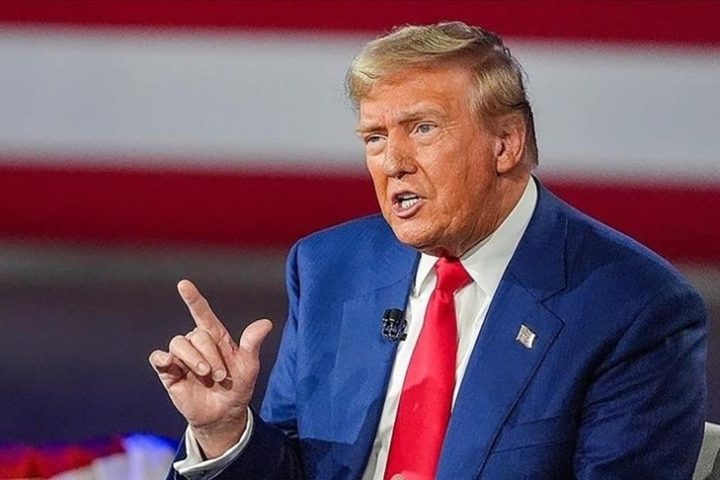Federal Reserve Governor Michelle Bowman’s recent statements calling for more measured regulatory approaches to cryptocurrency have sparked intense debate about whether America’s central bank is softening its traditionally skeptical stance toward digital assets. Her remarks, urging policymakers to avoid stifling innovation through excessive caution while acknowledging legitimate regulatory concerns, represent a notable departure from the Fed’s typically reserved position on cryptocurrency. Understanding whether Bowman’s comments signal a genuine shift in Federal Reserve thinking—and what that might mean for cryptocurrency regulation—requires examining her statements in context, exploring the Fed’s institutional concerns, and considering the broader political and economic factors influencing central bank perspectives on digital assets.
Michelle Bowman’s Statements: What She Actually Said
Federal Reserve Governor Bowman’s comments on cryptocurrency regulation came during a speech addressing digital innovation and banking supervision. Her remarks emphasized the need for balanced regulatory approaches that manage risks without unnecessarily constraining technological advancement.
Key Points from Bowman’s Speech
Bowman acknowledged that cryptocurrency and blockchain technology offer potential benefits including payment system improvements, financial inclusion opportunities, and operational efficiency gains for financial institutions. She emphasized that regulatory frameworks should enable responsible innovation rather than adopting presumptively hostile approaches.
Specifically, Bowman argued that regulators should distinguish between different types of digital assets and activities rather than treating all cryptocurrency uniformly. She suggested that risk-based supervision focusing on actual demonstrated harms makes more sense than broad restrictions based on hypothetical concerns.
Additionally, Bowman emphasized the importance of regulatory clarity, arguing that ambiguous rules create uncertainty discouraging responsible actors while failing to prevent genuinely risky activities. She called for clearer guidance from regulators about permissible activities and compliance expectations.
Her comments also addressed the global competitive dimension, noting that other countries are establishing cryptocurrency frameworks potentially putting American institutions at disadvantage if U.S. policy proves excessively restrictive.
What Makes These Comments Noteworthy
Bowman’s remarks stand out because Federal Reserve officials typically exercise extreme caution when discussing cryptocurrency, often emphasizing risks including volatility, fraud potential, money laundering concerns, and financial stability threats.
The Fed’s institutional culture prioritizes stability and risk management, creating organizational bias toward conservative approaches to emerging technologies that could threaten established financial systems. Governor Bowman’s willingness to publicly argue for less cautious approaches represents departure from this institutional norm.
Additionally, as a Fed governor, Bowman influences banking supervision policy affecting how regulators treat banks’ cryptocurrency activities. Her views could signal upcoming changes in supervisory approaches that have recently discouraged banks from digital asset engagement.
The Federal Reserve’s Traditional Crypto Skepticism
Understanding the significance of Bowman’s comments requires context about the Federal Reserve’s historically cautious—critics would say hostile—approach to cryptocurrency.
Supervisory Guidance Discouraging Bank Crypto Activities
The Fed, along with other banking regulators, has issued supervisory guidance that many interpret as discouraging banks from cryptocurrency engagement. This guidance emphasizes risks including volatility exposure, custody challenges, fraud concerns, and compliance complexity.
Banks report that examiners scrutinize cryptocurrency activities intensively, requiring extensive risk management documentation and capital allocation that makes digital asset businesses economically unattractive. This supervisory pressure has led many banks to abandon or scale back cryptocurrency plans.
Critics characterize this approach as “Operation Chokepoint 2.0″—alleging coordinated regulatory effort to exclude cryptocurrency from the banking system without formal rulemaking or democratic accountability. While regulators deny coordinated campaigns, the pattern of banks retreating from crypto amid supervisory pressure is undeniable.
Concerns About Financial Stability
The Federal Reserve’s primary mandate involves maintaining financial stability, creating institutional focus on how cryptocurrency could threaten this objective. Concerns include rapid growth creating systemic importance before appropriate safeguards exist, interconnections between crypto and traditional finance enabling contagion, stablecoin runs potentially disrupting payment systems, and leverage amplifying losses during market stress.
Key stability concerns include:
- Contagion risks from crypto market dysfunction spreading to traditional finance through institutional exposures
- Stablecoin redemption pressures forcing fire sales of reserve assets during stress
- Shadow banking parallels where unregulated crypto lending replicates risks from previous financial crises
- Operational dependencies on concentrated service providers whose failures could cascade
- Pro-cyclical leverage amplifying both booms and busts in destabilizing patterns
These concerns reflect lessons from previous financial crises where innovations initially considered peripheral to core financial systems ultimately threatened stability when they grew interconnected and systemically important.
Central Bank Digital Currency as Alternative
The Federal Reserve’s exploration of central bank digital currency (CBDC) potentially reflects view that publicly issued digital dollars represent superior alternative to private cryptocurrencies or stablecoins. This perspective creates institutional incentive to limit private digital currency competition.
Some observers suspect the Fed’s crypto skepticism partly stems from protecting the future CBDC project from competition. If private stablecoins or cryptocurrencies become deeply embedded in payment systems, launching CBDCs becomes more difficult and potentially less necessary.
What Could Explain Bowman’s Shift?
If Bowman’s comments represent genuine perspective shift rather than individual outlier views, several factors might explain the Federal Reserve’s evolution toward less cautious cryptocurrency approaches.
Recognition of Inevitable Integration
One possibility is that Fed officials increasingly recognize cryptocurrency’s integration into mainstream finance as inevitable reality requiring accommodation rather than resistance. As major institutions adopt digital assets despite regulatory discouragement, attempting to maintain separation becomes futile.
This recognition might produce strategic pivot toward channeling cryptocurrency into regulated frameworks rather than trying to prevent adoption entirely. Such approaches acknowledge that technology-driven financial evolution cannot be stopped, only guided toward safer implementations.
Competitive Concerns About U.S. Leadership
Growing awareness of international regulatory competition may be influencing Fed thinking. If American restrictiveness drives cryptocurrency innovation offshore, the U.S. could lose influence over global digital finance standards while American institutions fall behind international competitors.
Bowman explicitly referenced global competitiveness in her remarks, suggesting this consideration is influencing Fed perspectives. Maintaining dollar dominance and American financial sector leadership in increasingly digital global economy may require embracing rather than resisting cryptocurrency innovation.
Political and Industry Pressure
The cryptocurrency industry’s massive lobbying campaign and political mobilization has changed Washington’s political dynamics around digital assets. This pressure creates risks for regulatory agencies including the Fed if their approaches appear obstructionist without clear justification.
Additionally, with millions of Americans owning cryptocurrency, political costs of policies perceived as hostile to retail investors’ interests have increased. Fed officials likely recognize that public support for central bank independence could erode if the institution appears to be blocking technologies that benefit ordinary citizens.
Learning from Actual Experience
Years of cryptocurrency market experience may have moderated some Fed concerns as hypothetical worst-case scenarios failed to materialize. While problems including fraud and volatility remain, systemic financial stability threats from cryptocurrency have been limited despite substantial market growth.
This track record might support arguments that properly designed oversight can manage cryptocurrency risks without draconian restrictions. The 2022 crypto market crash, while devastating for investors, didn’t trigger broader financial crisis—potentially validating views that cryptocurrency remains sufficiently separated from core financial systems.
Dissenting Views Within the Fed
It’s crucial to recognize that Bowman’s comments may represent individual views rather than institutional consensus. Other Federal Reserve officials maintain more skeptical positions, suggesting internal debate rather than unified policy shift.
Fed Chair Jerome Powell has maintained cautious rhetoric about cryptocurrency, emphasizing risks and the need for comprehensive regulation before wider adoption. Other governors and regional Fed presidents have similarly stressed concerns about consumer protection, financial stability, and money laundering.
This internal diversity means Bowman’s comments shouldn’t be interpreted as definitive Federal Reserve policy change. Instead, they may represent one voice in ongoing institutional debate about appropriate cryptocurrency regulatory approaches.
Implications for Banks and Crypto Companies
Whether or not Bowman’s views herald broader Fed policy shifts, her comments have immediate implications for financial institutions considering cryptocurrency activities.
Potential Changes in Supervisory Approach
If Bowman’s perspective influences supervisory policy, banks might find regulators more receptive to cryptocurrency proposals that demonstrate appropriate risk management. This could manifest through clearer guidance about permissible activities, more proportionate capital requirements, less presumptively hostile examination approaches, or approval of innovative cryptocurrency products.
Banks have been paralyzed by regulatory uncertainty, unsure whether cryptocurrency activities would trigger supervisory retaliation. Any movement toward clearer, more accommodating frameworks would encourage institutions to develop digital asset capabilities.
Strategic Considerations for Financial Institutions
Banks and financial institutions should monitor Federal Reserve messaging carefully for signals about evolving supervisory expectations. Steps to consider include:
- Engage proactively with regulators seeking guidance about specific cryptocurrency activities under consideration
- Develop robust risk management frameworks demonstrating serious approaches to cryptocurrency risks
- Start small with pilot programs testing cryptocurrency capabilities without excessive risk exposure
- Document compliance efforts thoroughly showing good-faith attempts to address regulatory concerns
- Monitor peer institutions’ activities observing which cryptocurrency initiatives receive supervisory approval
- Build internal cryptocurrency expertise preparing to move quickly if regulatory environment improves
- Participate in industry working groups helping develop best practices and standards
Even if Fed policy doesn’t shift dramatically, institutions that prepare for eventual cryptocurrency integration will benefit when opportunities emerge.
Crypto Industry Response and Skepticism
The cryptocurrency industry has cautiously welcomed Bowman’s comments while maintaining skepticism about whether they signal meaningful policy changes. Years of regulatory hostility have created cynicism about whether any single official’s statements translate into actual operational improvements.
Industry Hopes for Regulatory Clarity
Cryptocurrency companies desperately want the regulatory clarity Bowman advocated. Clear rules about permissible activities, capital requirements, custody standards, and compliance expectations would enable business planning currently impossible amid pervasive uncertainty.
Industry participants hope Bowman’s comments presage Fed leadership on developing clearer frameworks that other regulatory agencies might follow. The Federal Reserve’s institutional credibility gives its positions significant influence over broader regulatory approaches.
Concerns About Continuing Restrictions
However, industry skepticism persists given the gap between regulatory rhetoric and supervisory reality. Officials often publicly support innovation while examination practices discourage risk-taking, creating disconnect between stated policy and actual enforcement.
Additionally, even if the Fed moderates its stance, other regulators including the SEC maintain aggressive enforcement approaches creating obstacles regardless of Federal Reserve positioning. Comprehensive improvement requires coordination across multiple agencies, not just Fed evolution.
Broader Context: The Regulatory Environment in Flux
Bowman’s comments occur amid broader regulatory flux as multiple factors reshape American cryptocurrency policy. Understanding this context helps assess whether her statements represent isolated perspective or part of larger trends.
Congressional Legislative Efforts
Congressional cryptocurrency legislation efforts, while stalled, demonstrate political pressure for clearer frameworks. If comprehensive legislation passes, it could override current regulatory approaches including Fed supervisory practices.
This legislative context may influence Fed positioning as officials recognize that congressional action could circumscribe their discretion. Getting ahead of legislation by developing more accommodating approaches could preserve Fed influence over outcomes.
Court Decisions Challenging Regulatory Overreach
Several court decisions have questioned regulatory agencies’ cryptocurrency enforcement approaches, finding that agencies exceeded their authority or failed to provide adequate notice of requirements. These judicial checks may be moderating regulatory aggressiveness.
Federal Reserve officials likely recognize that courts may impose limits on supervisory discretion if approaches appear arbitrary or inconsistent with statutory authority. This legal landscape might encourage more measured, well-justified regulatory frameworks.
International Regulatory Competition
As noted, other countries’ cryptocurrency frameworks are attracting businesses and innovation that might otherwise locate in America. This competitive dynamic creates pressure on U.S. regulators to offer attractive environments for responsible digital asset activities.
The Federal Reserve’s international engagement exposes officials to foreign approaches that balance innovation with oversight more successfully than current American frameworks. This exposure may be influencing perspectives about optimal regulatory strategies.
Looking Ahead: What to Watch
Several indicators will reveal whether Bowman’s comments represent genuine Federal Reserve policy evolution or isolated individual perspective.
Supervisory Guidance and Examination Practices
The clearest signal would be changed supervisory guidance providing clearer frameworks for bank cryptocurrency activities or revised examination practices treating digital assets less presumptively hostile. Actions speak louder than words in regulatory contexts.
Banks’ experiences with examiners will reveal whether supervisory culture is genuinely evolving. If institutions find regulators more receptive to well-designed cryptocurrency proposals, that would confirm meaningful change regardless of public rhetoric.
Other Fed Officials’ Statements
Watching whether other Federal Reserve governors, regional Fed presidents, or Chair Powell echo Bowman’s themes will indicate whether her views are gaining institutional traction. Consensus among multiple officials would signal broader policy evolution.
Conversely, if other Fed officials continue emphasizing caution and risks without acknowledging innovation benefits, Bowman’s comments might represent minority perspective unlikely to influence actual policy.
Concrete Policy Proposals
Ultimately, concrete proposals—whether supervisory guidance, rule proposals, or formal policy statements—will demonstrate whether Bowman’s perspective translates into institutional action. Rhetoric without follow-through would suggest limited practical significance.
Conclusion: Cautious Optimism Warranted
Governor Bowman’s call for less cautious cryptocurrency regulation represents noteworthy departure from typical Federal Reserve rhetoric. Her emphasis on balanced approaches, regulatory clarity, and international competitiveness addresses legitimate industry concerns while acknowledging real risks.
However, whether her comments herald genuine Federal Reserve policy shift remains uncertain. Individual officials’ views don’t always reflect institutional consensus, and gaps between rhetoric and supervisory reality often persist in regulatory contexts.
The cryptocurrency industry and banking sector should respond with cautious optimism—welcoming Bowman’s perspective while recognizing that meaningful change requires sustained institutional commitment demonstrated through concrete policy actions, not just speeches.
The coming months will reveal whether Bowman’s comments represent leading edge of Federal Reserve evolution toward more balanced cryptocurrency approaches or isolated opinion unlikely to influence actual supervisory practices. The answer will significantly impact American digital asset markets and financial innovation.












